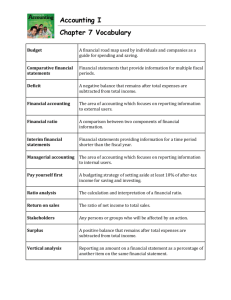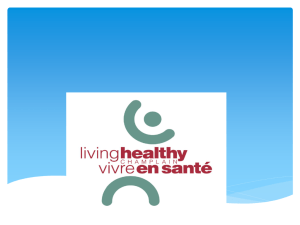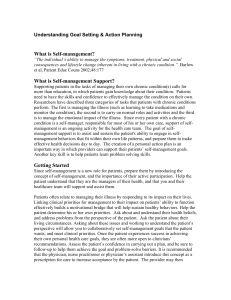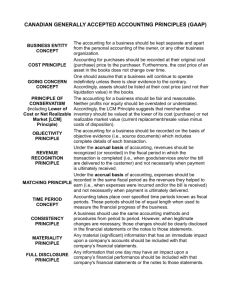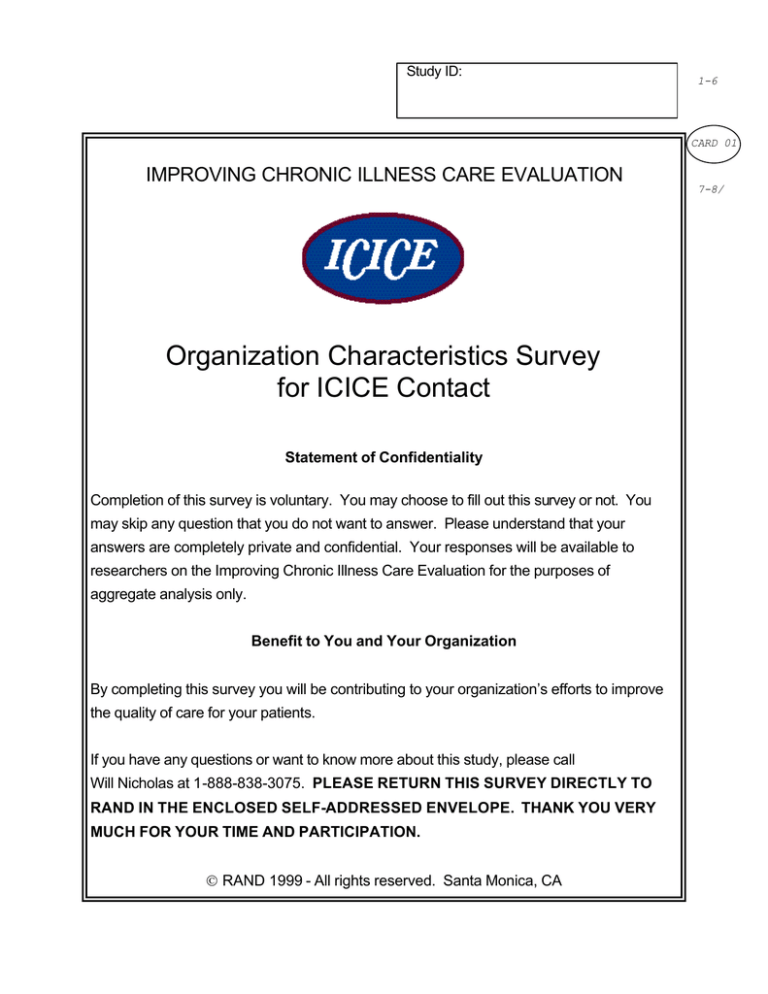
Study ID:
1-6
CARD 01
IMPROVING CHRONIC ILLNESS CARE EVALUATION
7-8/
Organization Characteristics Survey
for ICICE Contact
Statement of Confidentiality
Completion of this survey is voluntary. You may choose to fill out this survey or not. You
may skip any question that you do not want to answer. Please understand that your
answers are completely private and confidential. Your responses will be available to
researchers on the Improving Chronic Illness Care Evaluation for the purposes of
aggregate analysis only.
Benefit to You and Your Organization
By completing this survey you will be contributing to your organization’s efforts to improve
the quality of care for your patients.
If you have any questions or want to know more about this study, please call
Will Nicholas at 1-888-838-3075. PLEASE RETURN THIS SURVEY DIRECTLY TO
RAND IN THE ENCLOSED SELF-ADDRESSED ENVELOPE. THANK YOU VERY
MUCH FOR YOUR TIME AND PARTICIPATION.
RAND 1999 - All rights reserved. Santa Monica, CA
INSTRUCTIONS
Before completing this survey, please read it through to become familiar with the
questions. Complete those questions for which you have the information and ask
other people in your organization (possibly from human resources, finance, or
clinical settings) for answers to any remaining questions.
GENERAL BACKGROUND AND SIZE INFORMATION
1.
2.
What is the legal organizational form of your organization?
Not-for-Profit (501C(3))
[
]
Other Not-for-Profit
(includes public and district hospitals )
[
]
For-Profit
[
]
Other (please indicate)
[
] ________________________
9/
10-29/
At present, how large is your organization in regard to :
a)
# of FTE employees: ______________
30-34/
b)
# of physicians and other health professionals who are affiliated with your
organization, but not employed by it: ______________
35-39/
c)
Annual operating budget: $_________________
(for the most recent fiscal year ending _______________).
d)
e)
40-49/
50-59/
For Hospitals: For the most recent fiscal year ending _________________:
60-61/
1)
How many staffed beds are there in your hospital? ____________
62-67/
2)
What is the average occupancy rate? ______________
68-70/
3)
Are you a member of a health system or network? Yes ____ No ____
71/
For Health Plan: For the most recent fiscal year ending _________________:
72-73/
1)
74-80/
How many enrollees are there in your plan? __________
CARD 02
f)
7-8/
For Physician Group: For the most recent fiscal year ending _______________:
9-10/
1)
How many physicians are in your group practice? ____________.
11-14/
2)
What was the total # of patient visits for the most recent fiscal year?
____________.
15-20/
1
CARD 01 / 02
FINANCIAL INFORMATION (Your organization’s financial office may be the best source for
this information).
3.
Payment Sources
a)
b)
c)
d)
What percentage of your patient revenue comes from each of the following
sources:
Medicare
_____%
21-23/
Medicaid
_____%
24-26/
Commercial
_____%
27-29/
Self-pay
_____%
30-32/
Total =
100%
Approximately how many different insurance plans do you have contacts with?
_____
33-37/
How many different insurance plans account for 50% of your business? For
example, for some organizations, 3 plans account for 50% of their business. For
others it might take 10 or more plans. How many is it for your organization?
_____
38-40/
Does your organization own an insurance plan that provides coverage for people
other than your own employees ?
Yes
[
]
No
[
]
41/
If YES: What percentage of the organization’s patients revenue comes from this
plan? _____%
4.
42-44/
Revenue Sources
a)
b)
What percentage of the operating revenues of your organization are Medicare
revenue under DRGs? _____%
45-47/
Capitation is defined as the pre-determined lump sum payment to care for
patients regardless of how many or how few services they may need. Given this
definition, what percentage of the operating revenues of your organization come
from capitated payment (not including DRGs)? _____%
2
48-50/
CARD 02
5.
For your most recent fiscal year, please check the box below that best reflects your
organization’s financial situation.
a)
Operating expenses exceeded operating revenue by > 25%
q
51/
b)
Operating expenses exceeded operating revenue by > 11-24%
q
52/
c)
Operating expenses exceeded operating revenue by > 1-10%
q
53/
d)
Broke even
q
54/
e)
Operating revenue exceeded operating expenses by > 1-10%
q
55/
f)
Operating revenue exceeded operating expenses by > 11-24%
q
56/
g)
Operating revenue exceeded operating expenses by > 25%
q
57/
HUMAN RESOURCES INFORMATION (Your organization’s human resources office may be
the best source for this information.)
6.
Performance Appraisal and Rewards
a)
What percentage of
nurses and other hospital
staff are paid by:
What percentage of physicians
associated with your
organization are paid by:
1) straight salary only?
_____%
_____%
58-63/
2) salary and bonus
related to incentive?
_____%
_____%
64-69/
3) gain sharing program?
_____%
_____%
4) other? (please fill in)
_________________
_____%
_____%
100%
100%
TOTAL
70-75/
76-81/
CARD 03
b)
7-8/
Do any staff receive any additional pay for helping to achieve predetermined
service quality, patient care quality, or outcome of care objectives?
Yes
[
]
No
[
]
9/
If YES: Approximately what percentage receive such pay? _____%
3
CARD 02 / 03
10-12/
c)
Do any staff receive any additional pay for saving costs?
Yes
[
]
No
[
]
13/
If YES: Approximately what percentage receive such pay? _____%
d)
14-16/
Do any staff receive any non-financial rewards for helping to achieve
predetermined service quality, patient care quality or outcomes of care objective
s?
Yes
[
]
No
[
]
17/
If YES: please briefly describe ______________________________________
20-49/
_______________________________________________________________
e)
Do any employees receive any non-financial rewards for saving costs?
Yes
[
]
No
[
]
50/
If YES: please briefly describe ______________________________________
51-80/
_______________________________________________________________
CARD 04
f)
7-8/
What percentage of employees’ pay is based on their individual performance vs.
group/team performance?
1)
individual performance
_____%
9-11/
2)
group/team performance
_____%
12-14/
TOTAL = 100%
g)
How frequently is employee performance formally reviewed?
1)
once a year
_____
2)
twice a year
_____
3)
quarterly
_____
4)
monthly
_____
5)
other
_____ (Please specify: _________________________).
15/
4
CARD 02 / 03
16-35/
h)
7.
360 degree performance review is defined as a system of reviewing employee
performance using input from one’s superiors, peers, and subordinates and
synthesizing this input to develop a constructive plan for employee growth and
development? Using the definition, does your organization use 360 degree
performance appraisal?
Yes
[
]
No
[
]
36/
Have any professional staff been laid off in the past two years to the present due to
financial reasons?
Yes
[
]
No
[
]
37/
If YES: Approximately how many people? ___________
38-40/
CHRONIC CARE DELIVERY AT CLINIC/PRACTICE LEVEL: (You or someone in your clinic
or practice may be best able to address these questions.)
8.
9.
10.
Are you able to use an information system to systematically identify all patients with a
specific chronic disease?
a) by name:
Yes [
]
No
[
]
41/
b) with contact information:
Yes [
]
No
[
]
42/
Is your information system able to systematically provide reminders for services to
patients or feedback on performance?
a) Feedback and reminders for populations:
Yes
[
]
No
[
]
43/
b) Feedback and reminders for individual patients:
Yes
[
]
No
[
]
44/
c) Provider feedback:
Yes
[
]
No
[
]
45/
a) Reviewing the registry?
Yes
[
]
No
[
]
46/
b) Calling the patient?
Yes
[
]
No
[
]
47/
c) Providing on-going self-management support?
Yes
[
]
No
[
]
48/
d) Follow-up on patient status, self-management?
Yes
[
]
No
[
]
49/
Has someone been assigned the job of :
5
CARD 04
11.
12.
13.
14.
Can the appointment system be used to schedule pro-active follow-up visits?
Yes
[
]
No
[
]
50/
Are evidence-based guidelines used as the basis for clinical improvement?
Yes
[
]
No
[
]
51/
Does your organization use proven provider behavior change methods to implement
guidelines and integrate them into provisions of care?
Yes
[
]
No
[
]
52/
How do primary care clinicians and specialists communicate/collaborate? (Please
choose one.)
_____ primarily through traditional referral or
53/
_____ with a designated specialist team working closely with primary care clinicians to
improve their care
15.
16.
Does your organization communicate to all providers that they are expected to document
patients’ self-management goals and plans ?
Yes
[
]
No
[
]
54/
Do you routinely make available the following option for self-management support?
a) Referrals to self-management classes or educators?
Yes [
]
No
[
]
55/
b) Services to promote specific behavior, e.g.,
smoking cessation services, exercise classes?
Yes [
]
No
[
]
56/
6
CARD 04
CARD 05
17.
Have you set up links with identified community resources? If yes, please specify the
links:
a)
b)
c)
Community weight loss programs
Yes [
] No [
]
9/
If yes, specify : _______________________________________________
10-19/
Exercise programs
20/
Yes [
] No [
]
If yes, specify : _______________________________________________
21-40/
Support groups
41/
Yes [
] No [
]
If yes, specify : _______________________________________________
CARD 06
d)
e)
f)
Internet links
Yes [
] No [
]
10-19/
ADA/Lion’s club/elderly day centers
or other resources for people with
financial barriers to getting eye or
foot exams
20/
Yes [
] No [
]
If yes, specify : _______________________________________________
21-40/
Community podiatry services
41/
Yes [
] No [
]
Health department
Yes [
] No [
]
42-61/
7-8/
9/
If yes, specify : _______________________________________________
19.
7-8/
If yes, specify : _______________________________________________
CARD 07
g)
42-61/
9/
If yes, specify : _______________________________________________
18.
7-8/
10-19/
Does your organization have a designated staff person or resource responsible for
ensuring providers and patients make maximum use of community resources?
Yes
[
]
No
[
]
20/
Do senior leaders encourage improvement efforts in chronic care?
Yes
[
]
No
[
]
21/
7
CARD 05 / 06 / 07
20.
21.
22.
23.
24.
Do senior leaders visibly participate in improvement efforts in chronic care?
Yes
[
]
No
[
]
22/
Does the organization practice/facilitate options such as group visits, phone visits, or
meeting multiple patient needs in single visits?
Yes
[
]
No
[
]
23/
Does your organization initiate follow-up by phone and visit in accordance with
guidelines?
Yes
[
]
No
[
]
24/
Are patients informed about guidelines that affect their illness?
Yes
[
]
No
[
]
25/
Are patients’ self-management goals and plans assessed in a standardized manner?
Yes
[
]
No
[
]
26/
25.
26.
Does your organization provide options for peer support, such as groups or mentoring
programs?
Yes
[
]
No
[
]
27/
Are family concerns included in care planning?
Yes
[
]
No
[
]
28/
8
CARD 07
27.
Does your organization make available a list of identified community resources in an
accessible format?
Yes
[
]
No
[
]
29/
Along with this questionnaire, could you please provide a copy of each of the
following:
•
•
•
•
your organization’s mission/vision statement,
annual report,
summary of your strategic plan, and
most recent accreditation report.
As with everything else associated with the study, this information will be treated
as confidential.
THANK YOU FOR COMPLETING THIS SURVEY. PLEASE RETURN THIS SURVEY TO
RAND IN THE ENCLOSED SELF-ADDRESSED ENVELOPE.
9
CARD 07

